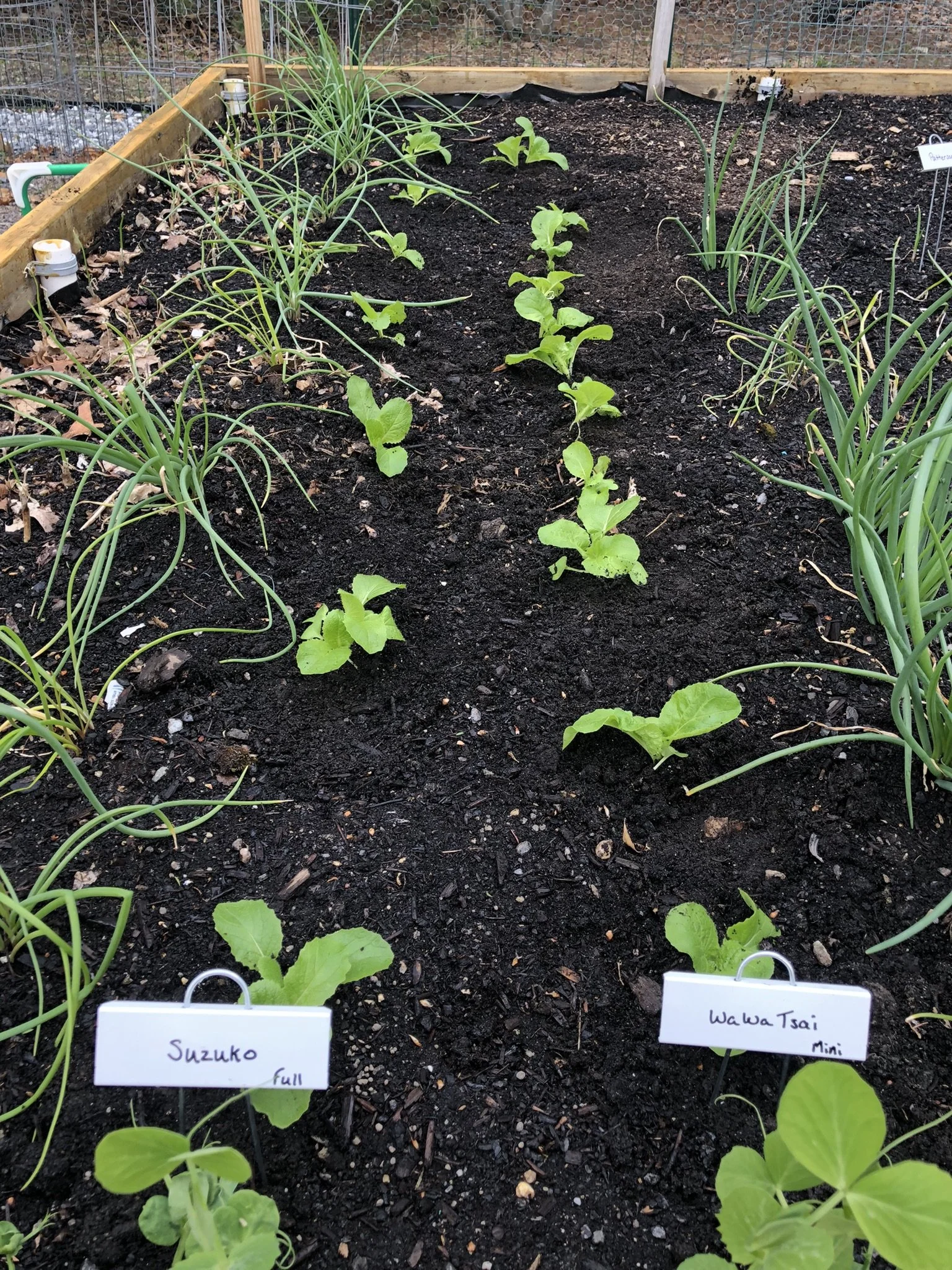What Can I Fit in my Space??
“How much can I plant in my garden?” is one of the top questions I get asked. The answer is, unfortunately, “It depends”. It depends on what and how much you and your family eat and how much space you have. Planning out a space can be daunting but very important. You want to make sure that you give your plants enough space to thrive but don’t waste space. There are two main ways to think through this to make the most of your space.
Plant spacing simply identifies the amount of space you need between each plant in each direction. Special note here that seed packets will often quote spacing in terms of space between plants and also space between rows. If you are planting in raised beds, you can ignore the row spacing. This is typically to allow for enough space to walk between without compacting the soil over the root area. Chances are that you aren’t walking between the rows in your raised beds.
Square foot gardening has you think in terms of what can fit in one single 1ft x 1ft spot in your garden. The number of plants that fit in that space varies per plant. For example, you can fit 16 or more carrots in a square foot but only 1 tomato or pepper plant.
The chart below provides recommended ranges for both spacing between plants and the number of plants per square foot. Either method of thinking shouldn’t yield drastically different results in terms of what you can fit, they are just different ways to look at it.
| Crop | Space between plants (inches) | # of plants per square Foot |
|---|---|---|
| Arugula | 6 to 18 |
4 to 16 |
| Basil | 4 to 8 | 2 to 4 |
| Beans (Pole) | 3 to 4 | 16 |
| Beans (Bush) | 4 to 6 | 4 to 9 |
| Beets | 2 to 4 | 9 to 16 |
| Bok Choy * | 3 to 10 | 1 to 9 |
| Broccoli | 12 to 18 | 1 |
| Brussels Sprouts | 15 to 18 | 1 |
| Cabbage | 15 to 18 | 1 |
| Carrots | 2 to 3 | 16 |
| Cauliflower | 15 | 1 |
| Celery | 9 | 2 |
| Collards | 10 to 12 | 1 |
| Corn | 8 to 10 | 2 |
| Cucumber | 12 | 1 to 2 |
| Dill | 4 to 12 | 1 to 4 |
| Edamame | 6 | 4 |
| Eggplant | 18 to 24 | 1 |
| Fennel* | 4 to 12 | 2 |
| Kale | 6 to 8 | 2 |
| Kohlrabi | 4 to 5 | 4 |
| Leeks | 2 to 3 | 16 |
| Lettuce, head | 10 to 12 | 1 to 4 |
| Lettuce, leaf | 3 to 6 | 6 to 9 |
| Melons | 18 to 24 | 1 |
| Okra | 10 to 12 | 1 |
| Onion, bluing | 3 to 4 | 16 |
| Oregano | 8 to 10 | 1 |
| Parsley | 4 to 6 | 4 |
| Parsnips | 3 to 4 | 9 to 16 |
| Peas | 1 to 1.5 | 16+ |
| Peppers | 12 to 15 | 1 |
| Potatoes | 8 to 12 | 1 to 2 |
| Pumpkins | 24 to 36 | 0.5 to 1 |
| Radishes | 2 to 3 | 16+ |
| Rosemary as annual | 8 to 10 | 1 |
| Rosemary as perennial | 24 to 36 | 0.3 |
| Rutabaga | 8 to 12 | 2 |
| Sage | 12 to 18 | 1 |
| Shallots | 4 to 6 | 4 to 9 |
| Spinach* | 4 to 6 | 4 to 9 |
| Squash, summer | 8 to 24 | 1 |
| Squash, winter | 24 to 36 | 0.5 |
| Sweet potato | 10 to 12 | 1 |
| Swiss Chard | 6 to 9 | 4 |
| Tomatoes | 12 to 24 | 1 |
| Thyme | 12 to 24 | 1 |
| Turnip | 2 to 4 | 9 to 16 |
* = These crop can be available in “baby” or “mini” versions so plants on the high end of spacing for baby versions and on the low end for full size.
Don’t Forget!
Your plants will GROW! What might look like more space than you need when planting little seedlings will be what your full-grown plants need. You are planning for the future!

